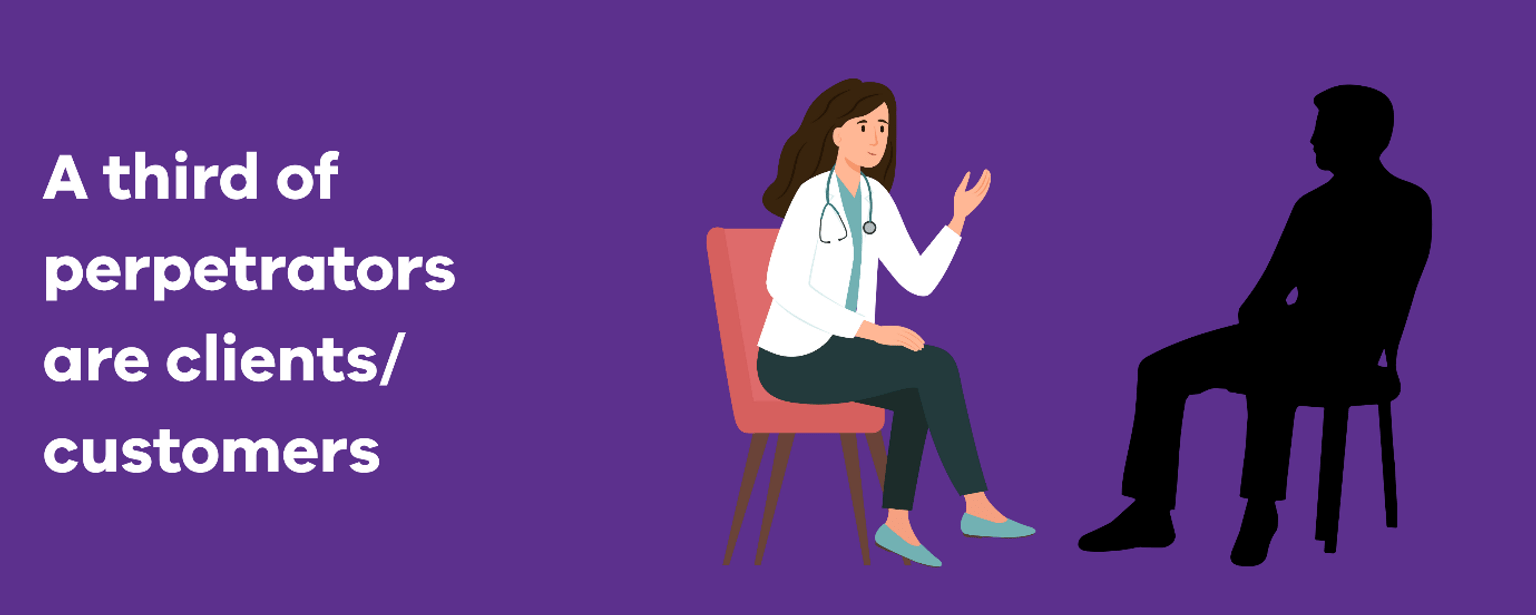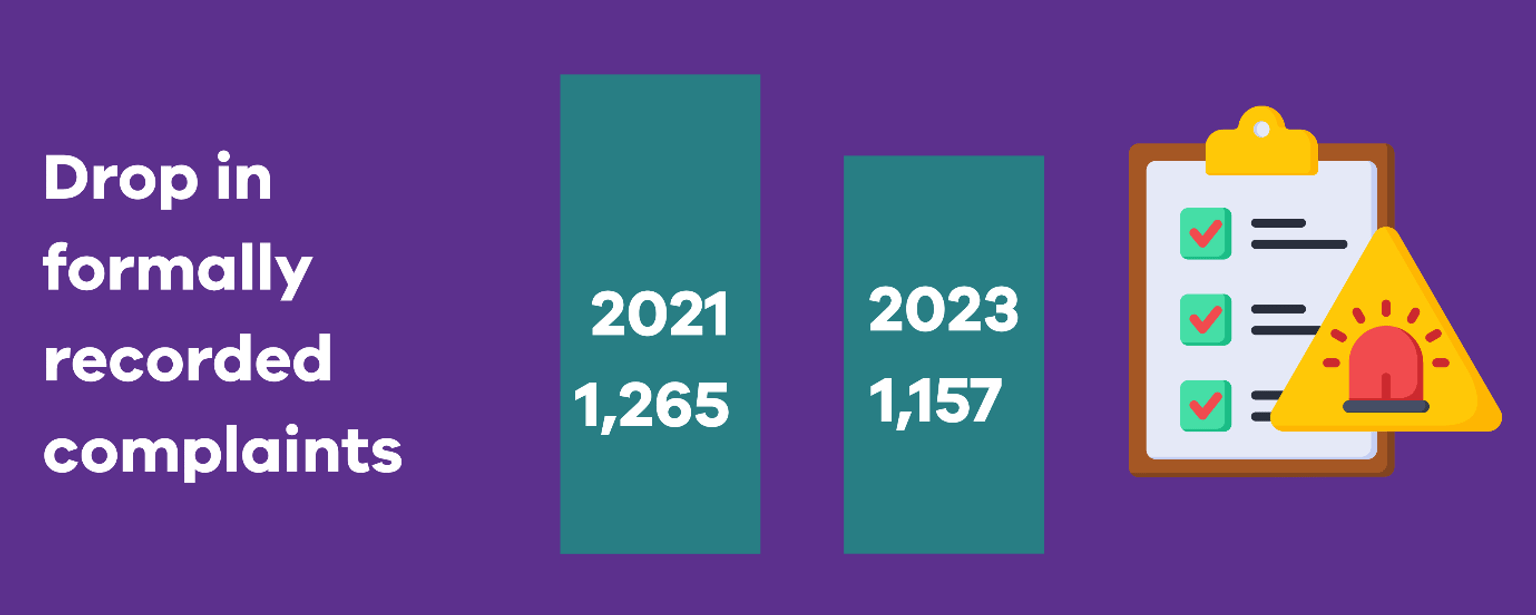Overall, sexual harassment increased by 1% for women in 2023 compared to 2021 (up to 7%). For men it stayed the same (4%).
While these overall rates are lower than the national average1, no amount of sexual harassment is acceptable. Sexual harassment in the public sector may be lower because the workforce is more regulated and has higher public scrutiny than the private sector. But public sector workplaces can also have enabling factors such as hierarchical structures, areas with poor or highly masculine workplace cultures, and lack of commitment from leaders (McFarlane et al. 2025). Public sector workers are also often front-line staff who face higher risk of sexual harassment from patients or clients (Mikołajczak et al. 2024).
Industries that saw increases in the experience of sexual harassment for both women and men included arts (4% increase for both) and public health care (1% increase for both). In 2023, 8% of women and 5% of men in both arts and public health care said they experienced sexual harassment at work.
Only local government saw a decrease in sexual harassment for both women and men. In 2023, there was a 1% decrease for both – down to 6% for women and 4% for men.
Industries that saw decreases for women were police and emergency services (from 12% in 2021 to 10% in 2023), sport and recreation (down from 8% to 7%), transport (down from 14% to 9%), and water and land management (down from 5% to 4%).
People of all ages experienced sexual harassment, but younger people (15 to 24 and 25 to 34) had higher rates. In 2023, there was a 1.3% increase for women aged 15 to 24 (up to 15.4%) and a 1.5% increase for men in this age group (up to 5.6%).
First Nations women saw a 2.6% increase (up to 9.1% in 2023). The experience of sexual harassment for First Nations men also increased by 0.2% to 5.6% in 2023. For comparison, non-Indigenous women’s and men’s rates were 6.5% and 3.4%.
Both women and men with disabilities experienced higher rates of sexual harassment than those without disabilities. The experience of sexual harassment for women with disability increased slightly in 2023 (up to 11.8% – a 0.2% increase). The experience for men with disability decreased slightly (down 0.3% to 8.1%). Women and men without a disability had rates of 6.1% and 3.2%.
Sexual harassment increased for culturally and racially marginalised (CARM) women by 0.8% in 2023 (up to 6.2%). This rate is slightly lower than for non-CARM women, which increased by 0.1% (up to 6.7%). Our Intersectionality at Work(opens in a new window) report (2023: 64) discussed how we need more research on CARM women’s experiences. CARM women may face more barriers to reporting because of insecure work and visa conditions, cultural expectations about gender roles and attitudes to authorities, and different understandings of what counts as sexual harassment.
Thirty-nine percent of Victoria’s healthcare workers are born overseas, and healthcare workers experience high rates of sexual harassment in general (Mikołajczak et al. 2024:14). As such, this is a significant issue for public health care organisations in particular.
Bisexual women saw a 0.8% increase in sexual harassment in 2023 (up to 15.1%). The experience of sexual harassment for non-binary or gender diverse people increased by 1.6% (up to 15.6%) and for transgender men by 1.2% (up to 8.8%).
In both 2021 and 2023, most sexual harassment for people of all genders was perpetrated by a colleague. In 2021, 56% of women, 62% of men and 61% of people of self-described gender who reported harassment said a colleague did it. In 2023, these numbers went down to 48% of women, 61% of men and 51% of people of self-described gender.
In 2023, 37% of women said the person who harassed them was a client, customer, patient or stakeholder. This shows a 6% increase from 31% in 2021. As we discuss later, public-facing industries may need specific strategies to address this type of harassment.
Overall, 2% more women and 1% more men said they made a formal sexual harassment report in 2023 compared to 2021 (from 5% to 7% for women and from 3% to 4% for men). But the number of sexual harassment complaints formally recorded by duty holder organisations went down from 1,265 in 2021 to 1,157 in 2023. Lived experience accounts from the Speaking from Experience (AHRC 2025a) report reveal that fear of job loss, visa cancellation, cultural stigma, and a lack of trauma-informed processes prevent many victim survivors from formally reporting.
Also, data on how satisfied complainants were with outcomes was mostly missing. In 2023, this data was missing for 844 (73%) incidents (compared to 1172 (93%) in 2021).
"Data collection on sexual harassment remains a key area for improvement. Duty holders must get better at collecting this important data. They also need to focus much more on reducing sexual harassment and increasing formal reporting. In 2023, only 60%2 of duty holders demonstrated compliance with the requirement to make progress on sexual harassment."
Dr Niki Vincent, Public Sector Gender Equality Commissioner
Footnotes
- In the most recent Australian Human Rights Council national survey, 41% of women and 26% of men reported being sexually harassed at work in the 5 years to 2022 (AHRC 2022:47).
- This figure was incorrectly reported as 40% when we first published this report. We have now updated this to the correct figure of 60%.
Updated





